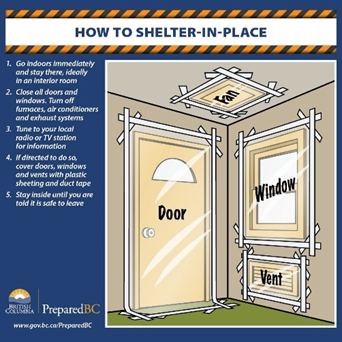Personal Preparedness
Personal Preparedness
A community is only as prepared as the individuals within the community. How can you prepare for unknown disaster incidents?
Ready.gov has excellent resources for individuals and families covering multiple incident types, including this comprehensive planning guide: https://www.ready.gov/sites/default/files/2021-11/are-you-ready-guide.pdf.
Basic planning starts with:
Communication Plan: Know how you’ll communicate with loved ones if regular communication pathways are down. Tips for a successful plan:
- Sign up for Howard County Smart911 to receive Weather Alerts and provide 911 Dispatch with important information that will improve the response of first responders: https://www.smart911.com/smart911/ref/reg.action?pa=howardcountyin
- Select a point of contact that everyone knows but who lives far enough away that it is unlikely that would be affected by the same event. During a disaster, local lines of communication may be jammed, but long-distance calls may have a better chance of success. Ensure everyone knows to call this person to check in with their safety status and has their contact information handy.
- Use texting, not calls, during a disaster. Phone calls take more data to complete than text messages. Local communications may be jammed and text messages will have a better chance of success.
Build a Kit
- First Responders recommend that individuals prepare to be self-sufficient for 3 days. This means water, food, a way to cook, medications and first aid supplies, ways to stay comfortable in extreme weather, backup methods to charge devices, and entertainment. Think through what your household needs to survive 3 days without help and start to stockpile those items, even if you must do it slowly due to financial considerations. Water recommendation is 3 gallons of water per person per day.
Evacuation and Shelter-in-Place Plans: If you needed to evacuate your home within 20 minutes, what would you take with you? If you pack in panic, you won’t grab the right stuff, so plan ahead now. Also, plan for where you can take shelter in your home from tornado or floods.
- Sheltering in Place takes on a different meaning if there is a chemical plume near your house. Time will be of the essence, so plan now on how you will:
- Close and lock all windows, doors, and fireplace dampers. Seal cracks and vents with plastic and/or duct tape to limit airflow.
- Choose an above-ground interior room and gather all of your supplies there.
- Listen to your radio or television and read updates online until you are told it is safe or to evacuate.

Specialty Planning Resources:
Older Adults:
https://www.ready.gov/older-adults
Disaster Planning Guide for Older Adults: https://www.ready.gov/sites/default/files/2023-09/ready-gov_disaster-preparedness-guide-for-older-adults.pdf
Lactation Considerations and Tips During Disasters in multiple languages
La Leche League International: https://llli.org/breastfeeding-info/infant-feeding-emergencies-multilingual/
Families with Children
Helping a Child Cope with a Disaster – Mental Health Resources: https://www.cdc.gov/childrenindisasters/children-disaster-help.html
Ready.Gov Family Resources: https://www.ready.gov/plan
Considerations for Disabilities
Ready.gov People with Disabilities Resources: https://www.ready.gov/disability
Pets and Animals
Ready.gov Prepare Your Pets for Disasters Resources: https://www.ready.gov/pets
Get Involved:
Request a training event for an organization you are involved with – contact the Preparedness Coordinator.
Check out our Volunteer Page.
